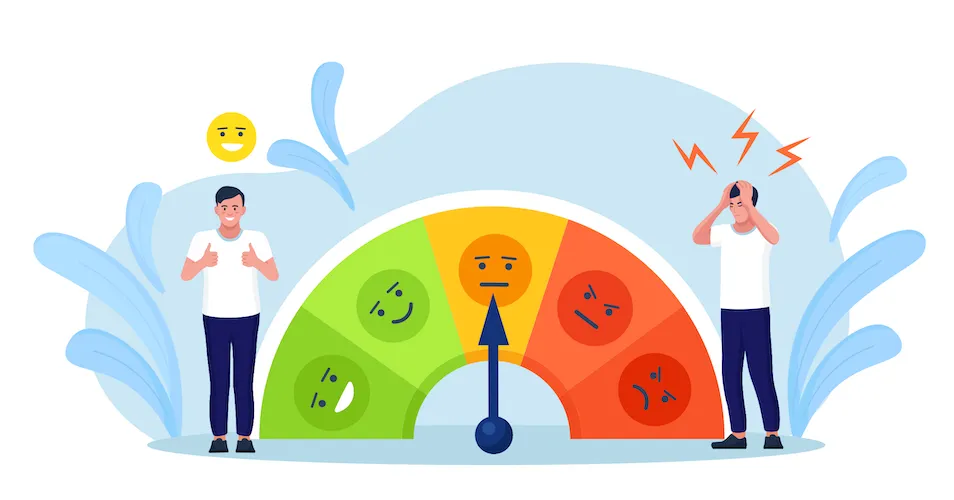Brainwave Monitoring May Reduce the Need for Invasive Tests in DLBCL Patients Receiving CAR T-Cell Therapy

CAR T-cell therapy is a revolutionary treatment for aggressive lymphomas like diffuse large B-cell lymphoma (DLBCL), especially when standard therapies fail. It involves genetically modifying a patient's immune cells to target and destroy cancer cells.
CAR T-Cell Therapy Side Effects: What is ICANS?
While highly effective, CAR T-cell therapy can lead to a complication known as immune effector cell-associated neurotoxicity syndrome (ICANS). This syndrome affects a significant portion (20-70%) of CAR T-cell recipients, typically within the first 3 to 10 days after treatment.
Symptoms of ICANS
ICANS symptoms range from mild to severe and can include:
- Confusion
- Headaches
- Difficulty concentrating
- Trouble finding words
- Seizures
- Brain swelling (cerebral edema)
- Coma (in rare cases)
Most cases are resolved within 7-10 days with appropriate management.
How is ICANS Diagnosed? The Role of EEG, MRI, and Lumbar Puncture
Traditionally, doctors have used a combination of tests to diagnose ICANS, including:
- Magnetic Resonance Imaging (MRI): Provides detailed images of the brain to look for abnormalities.
- Lumbar Puncture: A procedure to collect cerebrospinal fluid surrounding the brain and spinal cord for analysis.
- Electroencephalogram (EEG): Measures brain wave activity and can detect and monitor brain function issues.
Current guidelines recommend that doctors use a combination of these tests to diagnose ICANS; however, they tests can be costly, invasive, and may not always change the course of treatment.
New Research Suggests EEG is Most Effective for Guiding ICANS Management
A recent study published in Blood Advances challenges the routine use of MRI and lumbar puncture for ICANS diagnosis.
"Some of these tests, like a lumbar puncture, can be extremely taxing and invasive for patients. Here, we wanted to get a better sense of when these interventions are necessary versus when we could do without them", shared Dr. Guillaume Manson, one of the study authors.
The study, which involved 190 patients who received a CAR-T, found that EEG was the most helpful test for guiding treatment decisions:
- Nearly half (48%) of patients developed ICANS.
- While 78% of patients were tested with an MRI, 80% of those scans were normal.
- Similarly, 47% underwent a lumbar puncture, but no infections were detected.
- In contrast, 56% of patients received an EEG, and only 18% had normal results.
- In 45% of patients, EEGs detected an altered brain function and, in some cases, signs of seizures, even in those patients with no prior symptoms.
- Importantly, EEG findings led to changes in treatment plans for 16% of patients.
What Does This Mean for DLBCL Patients Receiving CAR T-Cell Therapy?
These findings suggest that EEG monitoring plays a crucial role in early detection and management of ICANS, potentially reducing the need for more invasive procedures like lumbar puncture. Early identification of brain function issues through EEG allows for rapid intervention, potentially improving patient outcomes.
Moving Forward
While this study provides valuable insights, more research is needed to confirm these findings and further refine ICANS diagnostic and management strategies. If you or a loved one are considering CAR T-cell therapy, discuss the benefits and risks with your healthcare team, including the potential for ICANS.
Continue learning about CAR T-cell therapy for lymphoma with our patient webinars. Create a free HealthTree accounts to access the recording below:
CAR T-Cell Therapy Advances in Large B-Cell Lymphoma
Sources:
CAR T-cell therapy is a revolutionary treatment for aggressive lymphomas like diffuse large B-cell lymphoma (DLBCL), especially when standard therapies fail. It involves genetically modifying a patient's immune cells to target and destroy cancer cells.
CAR T-Cell Therapy Side Effects: What is ICANS?
While highly effective, CAR T-cell therapy can lead to a complication known as immune effector cell-associated neurotoxicity syndrome (ICANS). This syndrome affects a significant portion (20-70%) of CAR T-cell recipients, typically within the first 3 to 10 days after treatment.
Symptoms of ICANS
ICANS symptoms range from mild to severe and can include:
- Confusion
- Headaches
- Difficulty concentrating
- Trouble finding words
- Seizures
- Brain swelling (cerebral edema)
- Coma (in rare cases)
Most cases are resolved within 7-10 days with appropriate management.
How is ICANS Diagnosed? The Role of EEG, MRI, and Lumbar Puncture
Traditionally, doctors have used a combination of tests to diagnose ICANS, including:
- Magnetic Resonance Imaging (MRI): Provides detailed images of the brain to look for abnormalities.
- Lumbar Puncture: A procedure to collect cerebrospinal fluid surrounding the brain and spinal cord for analysis.
- Electroencephalogram (EEG): Measures brain wave activity and can detect and monitor brain function issues.
Current guidelines recommend that doctors use a combination of these tests to diagnose ICANS; however, they tests can be costly, invasive, and may not always change the course of treatment.
New Research Suggests EEG is Most Effective for Guiding ICANS Management
A recent study published in Blood Advances challenges the routine use of MRI and lumbar puncture for ICANS diagnosis.
"Some of these tests, like a lumbar puncture, can be extremely taxing and invasive for patients. Here, we wanted to get a better sense of when these interventions are necessary versus when we could do without them", shared Dr. Guillaume Manson, one of the study authors.
The study, which involved 190 patients who received a CAR-T, found that EEG was the most helpful test for guiding treatment decisions:
- Nearly half (48%) of patients developed ICANS.
- While 78% of patients were tested with an MRI, 80% of those scans were normal.
- Similarly, 47% underwent a lumbar puncture, but no infections were detected.
- In contrast, 56% of patients received an EEG, and only 18% had normal results.
- In 45% of patients, EEGs detected an altered brain function and, in some cases, signs of seizures, even in those patients with no prior symptoms.
- Importantly, EEG findings led to changes in treatment plans for 16% of patients.
What Does This Mean for DLBCL Patients Receiving CAR T-Cell Therapy?
These findings suggest that EEG monitoring plays a crucial role in early detection and management of ICANS, potentially reducing the need for more invasive procedures like lumbar puncture. Early identification of brain function issues through EEG allows for rapid intervention, potentially improving patient outcomes.
Moving Forward
While this study provides valuable insights, more research is needed to confirm these findings and further refine ICANS diagnostic and management strategies. If you or a loved one are considering CAR T-cell therapy, discuss the benefits and risks with your healthcare team, including the potential for ICANS.
Continue learning about CAR T-cell therapy for lymphoma with our patient webinars. Create a free HealthTree accounts to access the recording below:
CAR T-Cell Therapy Advances in Large B-Cell Lymphoma
Sources:

about the author
Lisa Foster
Lisa Foster is a mom of 3 daughters and 1 perfect grandchild, a puzzle lover, writer and HealthTree advocate. She believes in the mission of the foundation and the team that builds it forward. She calls Houston, Texas home.
More on Navigating Your Health
Sign Up for Exclusive B-Cell Lymphoma Updates & Resources.
By subscribing to the Healthtree newsletter, you'll receive the latest research, treatment updates, and expert insights to help you navigate your health.








